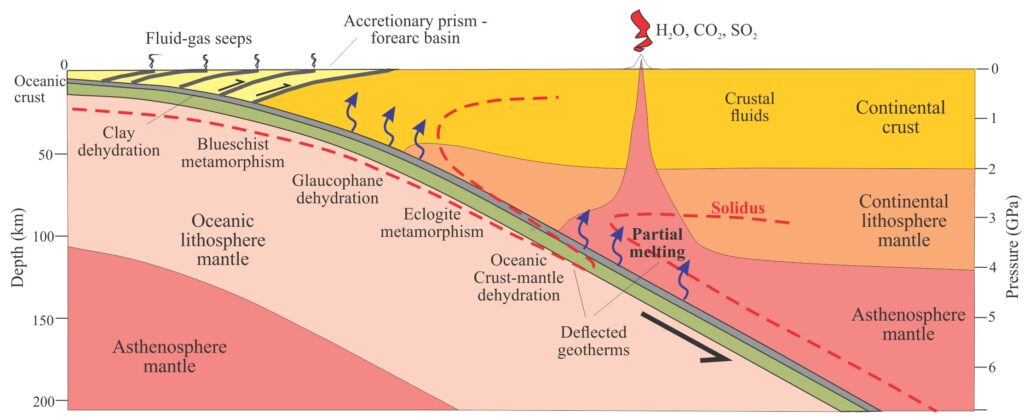
Geofluids transfer mass (fresh water, carbon dioxide, methane, hydrocarbons, dissolved mass) and heat throughout the crust and lithosphere mantle where they play a significant role in dynamic, magmatic, and chemical processes. Water and its dissolved constituents, particularly carbon as aqueous CO2 and carbonate, are recycled from oceanic crust to the mantle lithosphere via subduction zones. and in turn are eventually expelled to the atmosphere and hydrosphere.
In sedimentary basins, geofluids govern sediment compaction, the transfer of dissolved mass that produces a swath of diagenetic and metamorphic changes, heat flow, and mineralization.
Articles on shallow groundwater are listed separately under the banner Hydrogeology.
Geofluids: Lithosphere-scale fluid flow







